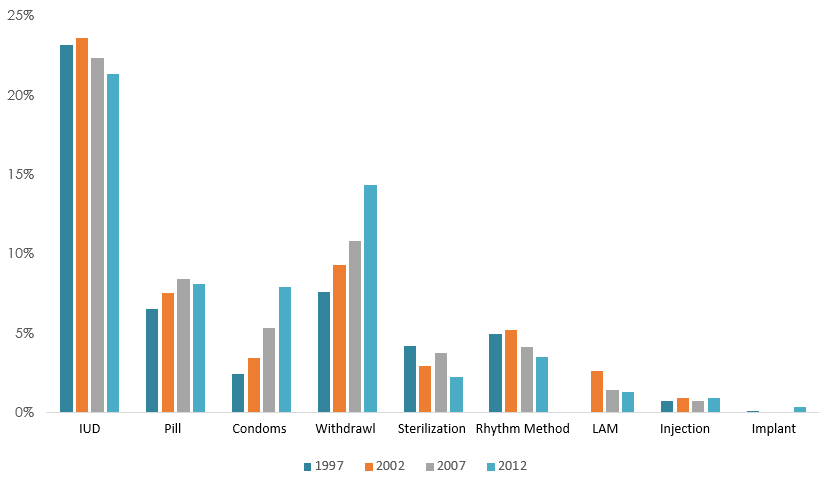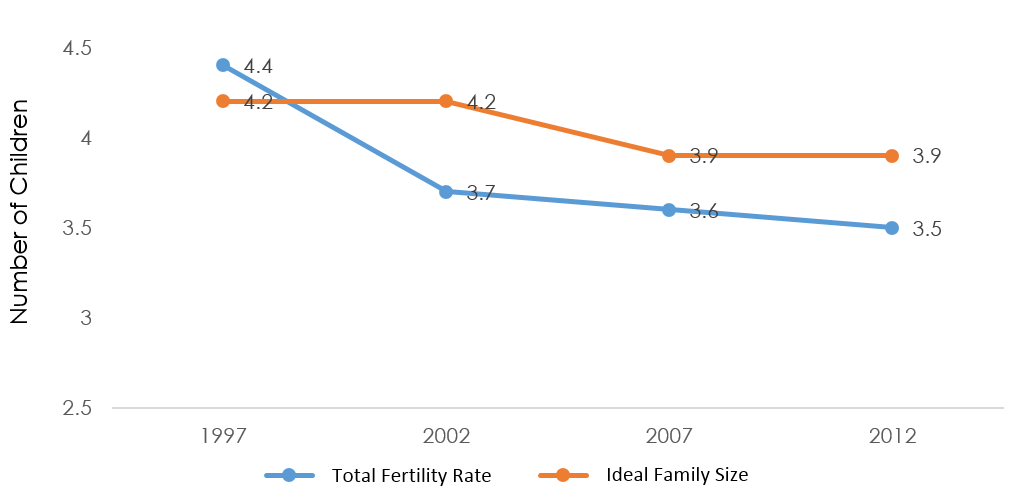What’s the Big Deal About Having Four Children? Behind Jordan’s Fertility Stall
One of the first things travelers see as they make their way through Jordan’s national airport is the royal family portrait: a king, a queen, two princes, and two princesses. The royal family symbolizes the ideal family in Jordan, where four children are the norm.
For over a decade, the total fertility rate in Jordan has stagnated between 3.7 and 3.5, an average of just below four children. Yet Jordan’s national family planning goal — as per the National Reproductive Health Family Planning Strategy — is to reach a replacement level of fertility of 2.1 by 2030 in order to ease the pressures of massive population growth, refugee influxes, and scarce natural resources.
As part of an assessment of USAID’s family planning program in Jordan over the last decade, the Institute for Reproductive Health at Georgetown University interviewed reproductive health stakeholders in Jordan and elsewhere to understand what is fueling the stagnation of Jordan’s total fertility rate and contraceptive prevalence rate. The interviews revealed several theories. From the many different hypothesis we heard, here are two we found most compelling:
Theory #1: Pervasive fears of side effects lead women to use less effective methods.
Access to and use of family planning methods are relatively high in Jordan, with a national contraceptive prevalence rate of 61% as of 2012. Yet when examining use over time, Jordan’s method mix shows an increased use of traditional methods, especially withdrawal, which jumped from 15.2% in 2007 to 18.9% in 2012. Use of only two methods—condoms and withdrawal—has consistently increased over time.
Method mix, by DHS Year (1997 – 2012)
Why the sudden increases in withdrawal and condom use? It appears that women in Jordan are increasingly concerned about side effects and fearful of infertility. We know that fear of side effects is not unique to Jordan. A recent Guttmacher report on Unmet Need for Contraception in Developing Countries reconfirms that myths and misconceptions about family planning methods are the number one driver for not choosing a family planning method, despite desire to avoid pregnancy. Jordan-specific data from the report found that 31% of women with unmet need for family planning cited side effects as a reason to not use a method. Additionally, 30% of the same population reported infrequent/no sex as their reason for non-use, despite about half (56%) reporting having sex in the past three months.
The Jordan case is particularly compelling. When selecting a family planning method, it is clear that education level plays a role, but not the role you would expect. In 2012, traditional (less effective) method use was greater among women with higher education (20.8%) than among women with basic education (13.8%). Yes, you read correctly! Field interviews found that women with higher education have increased knowledge about family planning methods, but perhaps because of this knowledge, were more fearful of side effects and tended to adopt myths and misconceptions that may deter use.
The increase in less effective methods—particularly among well-educated women—offers one explanation for the stagnation in fertility rates; however, powerful social norms about fertility are also driving their use.
Theory #2: To be a powerful woman is to produce four children, and at least one boy.
The ideal Jordanian family size of four children has remained consistent over the last two decades. As one Jordanian explained, “You want two boys, because two is better than one, and two girls so they can keep each other company.” Jordanian couples navigate strong social norms around desire for pregnancies immediately after marriage and a preference for sons. The impact of son preference is evident in statistics on family planning use after birth. With every additional male child, women were 30% more likely to use modern methods, compared to only 11% with every additional female child.
Total Fertility Rate and Ideal Number of Children in Jordan (1997 – 2012)
In Jordan, women’s limited participation in the workforce reinforces the idea that their power and status come from the ability to reproduce, rather than to economically produce. High levels of education among women in Jordan have not translated into significant participation of women in the workforce. From 1993 to 2011, there has been a very limited increase in the participation of women in the labor market, from 12.4% to 14.7%. Yet, we know that women’s participation in the labor market matters. Studies have shown that a 1% increase in women’s participation in the labor market can decrease the total fertility rate by 0.5%.
Finally, research suggests that mothers-in-law—in addition to husbands—may play an influential role in fertility decisions. From her ethnography research on childbirth in Jordan, Maffi argues that women in Jordanian society may use pregnancy and fertility as a way to leverage power and improve their status within their family group. When brides eventually become mothers-in-law, they may exert this authority over their daughters-in-law. In the book Women, Islam, and the State, Deniz Kandiyoti concludes, “the deprivation and hardship [a woman] can experience as a young bride are eventually superseded by the control of authority she will have over her own daughters-in-law.” In this context, increasing the baseline knowledge, acceptance, and access to a range hormonal family planning methods may actually produce generational impact.
We need to do more
After exploring all the theories of family planning stagnation, we know that increased use of less effective methods and strong norms about women’s reproductive status, family size, and son preference all play a role. While plateaus in total fertility rate is not uncommon, our assessment reveals that we need to do more in Jordan to address family planning social norms and behaviors of women, men, family members, and Jordanian society at large.
Stay tuned for part three of our blog series to discuss USAID’s investment in family planning programming: has it been effective in addressing contraceptive effectiveness?
Read our first post: Population, Plateaus, and Geopolitics: What’s up with the Fertility Stall in Jordan?
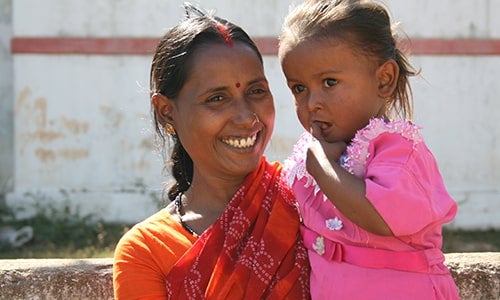 Where We Work
Where We Work  Press Room
Press Room 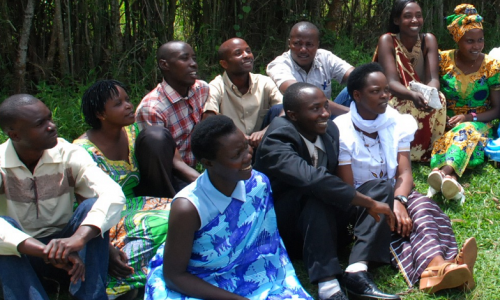 FACT Project
FACT Project  Passages Project
Passages Project  Learning Collaborative
Learning Collaborative  Search All Resources
Search All Resources  Social Norms
Social Norms 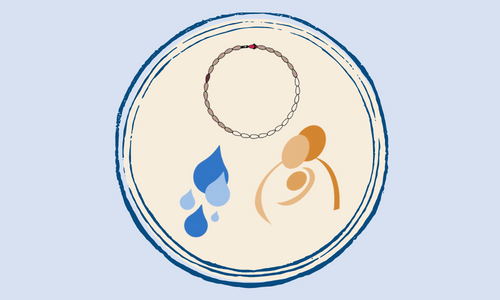 Fertility Awareness Methods
Fertility Awareness Methods 